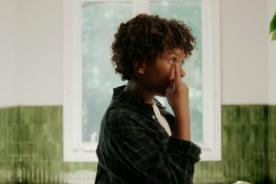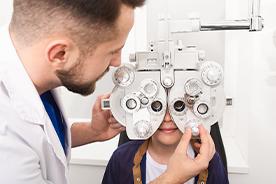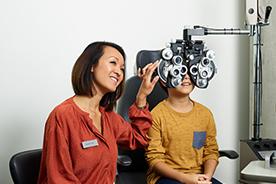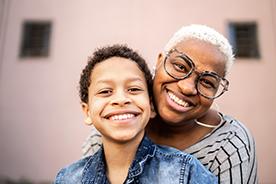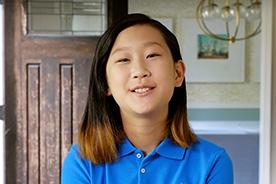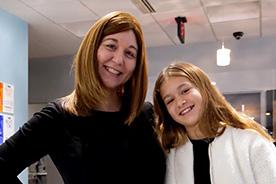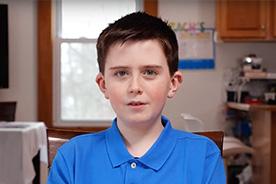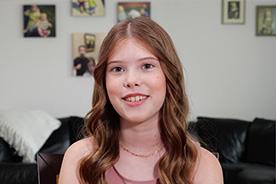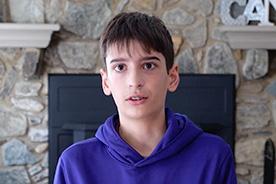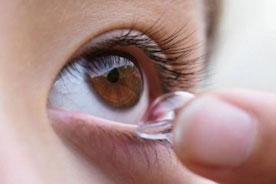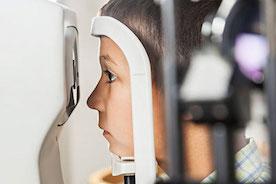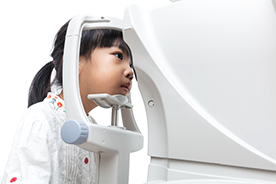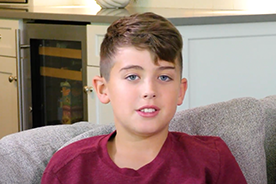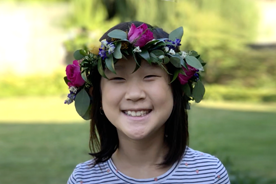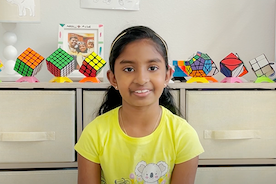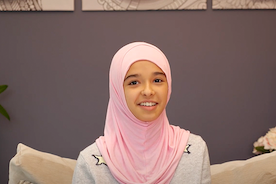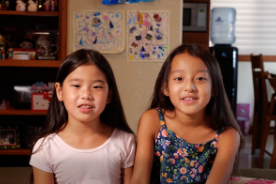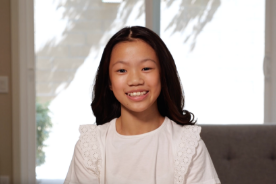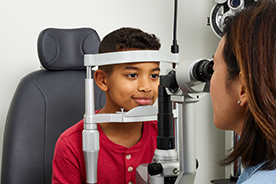Some children are eager to take off their glasses and get their first pair of contact lenses, while others may be more hesitant and will happily use their glasses instead. It’s reassuring news that children can responsibly use contact lenses,1 and they might be the best option for your child and their everyday needs and activities.2
Your child’s eye care and contacts: Where to Begin
Approximately 45 million people in the United States and 14.5% of all children under 17 years wear contact lenses,3 according to the American Optometric Association.
Regardless of these statistics, how do you know when your child is ready for contacts? You may notice signs that your child is ready if they’re asking about contacts or seem unhappy with their glasses. Other indicators include if they show signs of responsibility like completing their chores without being asked, demonstrate clean and hygienic habits, take care of their glasses (if they have already been prescribed), or if they’re involved in athletics or performing arts. Children in sports who wear contact lenses enjoy better vision and have more options for protective eye wear.4 They also don’t have to worry about their glasses slipping due to sweat or getting broken glass in their face as a result of accidental impact.4
Children under 12 years old are most frequently prescribed daily disposable soft contact lenses.3 Single-use and daily replacement contact lenses are prescribed mostly to avoid contamination that can arise from insufficient disinfection of contact lenses that are worn more than once, such as a two-week or monthly replacement lenses.3 Additionally, a child with allergies may not respond well to reusable contact lenses, which can exacerbate the itchy, watery redness kids with allergies experience.5
MiSight® 1 day is the first and only FDA-approved* soft contact lens proven to slow the progression of nearsightedness (myopia) in children aged 8-12 at the initiation of treatment.6** These are daily disposable lenses that are worn only during waking hours and are thrown away of every evening.
The “right” age for contact lenses
When it comes to contact lenses for children, maturity matters. Studies have found that children as young as eight are able to independently care for daily disposable contact lenses and wear them safely and successfully.8,9
“As a parent and optometrist, I can understand how parents like you and me might have questions about your child as they’re growing,” says CooperVision Senior Manager of Myopia Management Dr. Justin Kwan, OD, FAAO. “‘At what age can my child start wearing contact lenses?’ is a question I often get. Believe it or not, many kids can safely wear both hard and soft contact lenses. A lot depends on their maturity level. Kids who are responsible enough are fully capable of handling contact lenses, including safely inserting and removing them—and parents can help, too.”10
After your child’s eye exam with an eye care professional, you can determine together if your child is the right age (and right maturity level) for contact lenses.
Contacts for beginners: Dos and don’ts for your child’s health and safety
There are many dos and don’ts when it comes to contact lens safety. The earlier you reinforce, and your child starts these habits, the better chances of successful lens wear.9
DO
- Thoroughly wash and dry your hands before touching your contact lenses or your eyes. Carefully dry your hands with a clean, lint-free cloth.11
- Always have an up-to-date prescription for any contact lenses you wear.11
- Wear safety goggles or glasses over your lenses when playing sports or other physical activities.11
- Always have a pair of back-up glasses available.11
- For disposable contact lenses, like MiSight® 1 day, throw away each pair at the end of the day.*
DON’T
- Wear your contact lenses if the lens pack is broken.12
- Handle your contact lenses with hands that are still wet from washing.13
- Use saliva or water to wet your contact lenses.14
- Swim or shower while wearing contact lenses.15
- Sleep while wearing contact lenses.14
- Share your contact lenses with others.14
- Wear someone else’s contact lenses.11
- Wear your contact lenses for longer than prescribed.11
- Put a contact lens into an eye that is red.11
- Wear your contact lenses if your eye is uncomfortable. Instead, remove your lenses and contact your eye care professional.11
Download a quick and easy guide to putting in your contact lenses, with important dos and don’ts, here.
What to do next: Take action for your child’s eye health
While contact lenses are a great option for many age-appropriate children, some children aren’t ready yet, and this is best determined by parents and eye care professionals. For parents considering whether their child can responsibly handle contacts, you can look at how well your child handles other responsibilities, like personal hygiene and chores. If your child struggles with these, you may want to delay contact lenses wear for now and can work toward your child wearing them in the future. A few signs that show your child might not be ready include wearing another child’s lenses, trouble following rules, difficulty keeping their room and other belongings clean and not following the directions of an eye care professional.10
If your child tries contacts and decides to wait, they can always go back to glasses until the time is right for them.
When your child is ready to start wearing contact lenses—whether that is today or in the future—there are a lot of ways it will make their lives easier or better, such as by giving them a wider range of vision, enhancing their sports performance and experience, improving self-esteem, and overall, offering a better visual experience. Contact lenses can also lower the risk of damaged or lost eyeglasses, since your child will see clearly without them.3
Your next step is to make an appointment with an eye care professional. Find a MiSight® certified eye care professional and learn about free trials and rebates offered. You can also download our guide with tips that will help your child put in their contact lenses, with important dos and don’ts, here.




